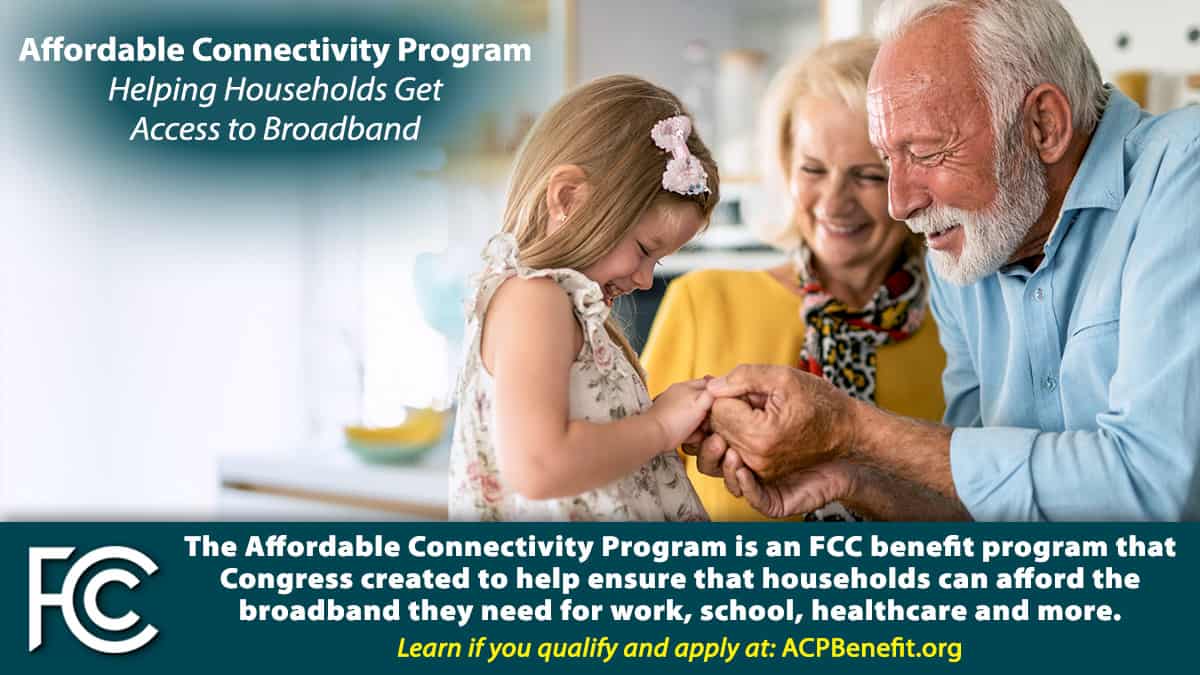There is a lot of “alphabet soup” associated with the internet business. Bits, bytes, gigs, and megs. ISPs, Wi-Fi, and MDUs, just to scratch the surface. Another acronym that many in our industry may not be as familiar with is the ACP: Affordable Connectivity Program.
In its first form, the ACP was known as another acronym, the EBB, or Emergency Broadband Benefit program, created during the height of the Covid-19 pandemic to bring not only economic relief to families but also to help those displaced to their homes for work, education, and entertainment, stay connected.
A wise man once said the pandemic brought 2030 internet usage to 2020, and our industry, the government, businesses, churches, and schools were caught off guard at first. Today, the new normal seems like all we have ever known. We may never have the true return to “normalcy,” but we are instead realizing the shortfalls and adapting quite nicely… Score one for the American spirit.
So, what is the ACP? The Affordable Connectivity Program is an FCC program to help families and households struggling to afford internet service. This benefit helps to connect eligible households with a discount of up to $30 per month towards broadband service and up to $75 per month for households on qualifying Tribal lands. Folks can also receive a one-time discount of up to $100 towards the purchase of a laptop, desktop computer, or tablet from participating providers.
As you may have guessed by now, Wisper is a “participating provider” and through the arduous work of Acquisition and Compliance Coordinator John S., Wisper has helped connect more than 350 households through the ACP program. But our work isn’t done yet…Sorry, John!
Who Is Eligible for the Affordable Connectivity Program?
A household is eligible if a member of the household meets one of the criteria below:
- Has an income that is at or below 200% of the Federal Poverty Guidelines or participates in certain assistance programs, such as WIC, SNAP, Medicaid, SSI, Federal Public Housing Assistance, or Lifeline;
- Is approved to receive benefits under the free and reduced-price school lunch program or the school breakfast program, including through the USDA Community Eligibility Provision.
- Received a Federal Pell Grant during the current award year, or
- Meets the eligibility criteria for a participating provider’s existing low-income program, subject to FCC approval.
Simply put, if a household has children who are eligible for the free and reduced school lunch program or Medicaid, regardless of state, they qualify for the ACP program.
According to the School Nutrition Association, pre-pandemic, nearly 100,000 schools/institutions serve school lunches to 29.6 million students daily, including 20.1 million free lunches and 1.7 million at a reduced price (student pays $0.40).
Our research shows that Wisper covers areas where the free lunch program for elementary students is high as 72 percent.
At Wisper, we believe that in today’s world reliable internet is just as important as a utility like water or electricity. With increased emphasis placed on the absolute necessity for the internet, families should not have to choose between paying for connectivity or other household bills.
The ACP is not a handout. It is instead a helping hand for families or households to stay connected. There should be no shame or embarrassment in taking advantage of a government program designed to help us in our everyday lives.
Wisper does not administer the program directly. Instead, households or individuals can be linked to the FCC website through wisperisp.com. After the application is complete and they receive an approval letter, they can contact Wisper to get connected to our services.
According to statistics supplied to the Biden administration (whitehouse.gov) by the Universal Service Administrative Company, more than 15,065,044 households have connected through the ACP/EBB since its inception. Of those, only 217,693 are on tribal lands.
In Wisper coverage states, Illinois is highest with 449,940 enrollees; Missouri has 247,650; Indiana, 283,957; Oklahoma, 227,163, Arkansas, 140,332; and Kansas has had 80,895 households enrolled.
California, New York, Texas, and Florida lead the nation with more than 1 million program enrollees and North Dakota is at the bottom of the list with just over 9,500. Many U.S. territories are well below 2,000 participants in the ACP.

